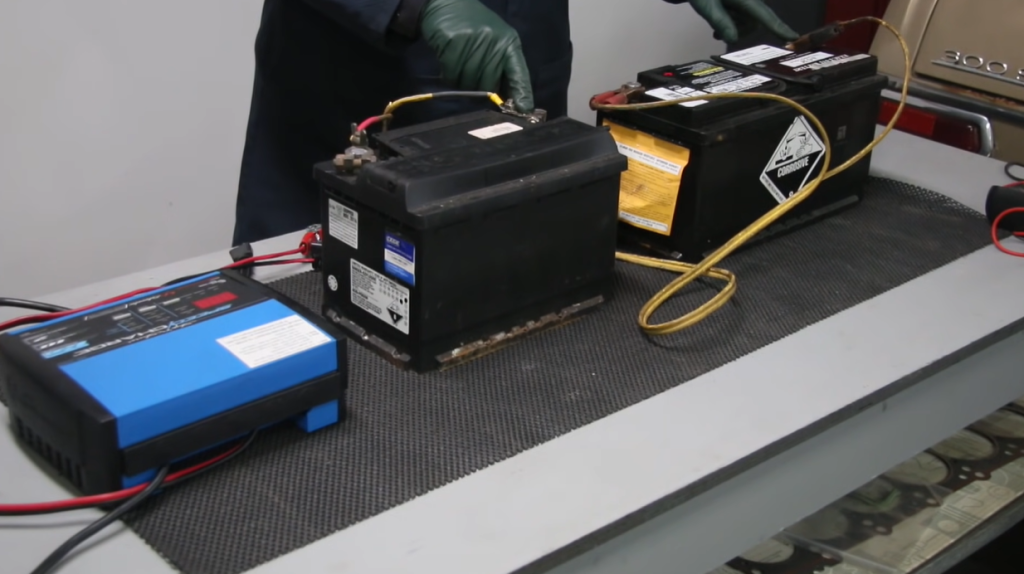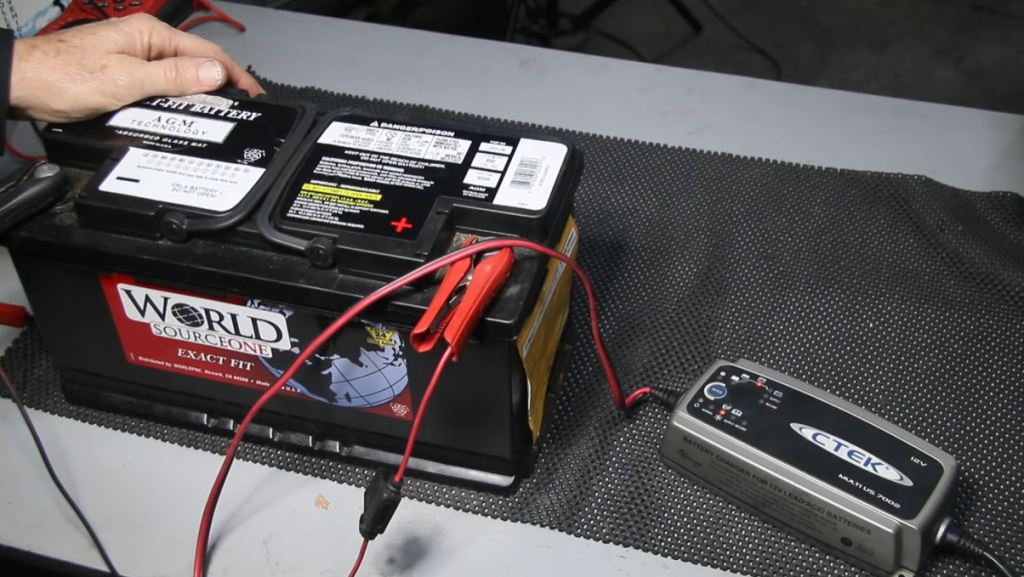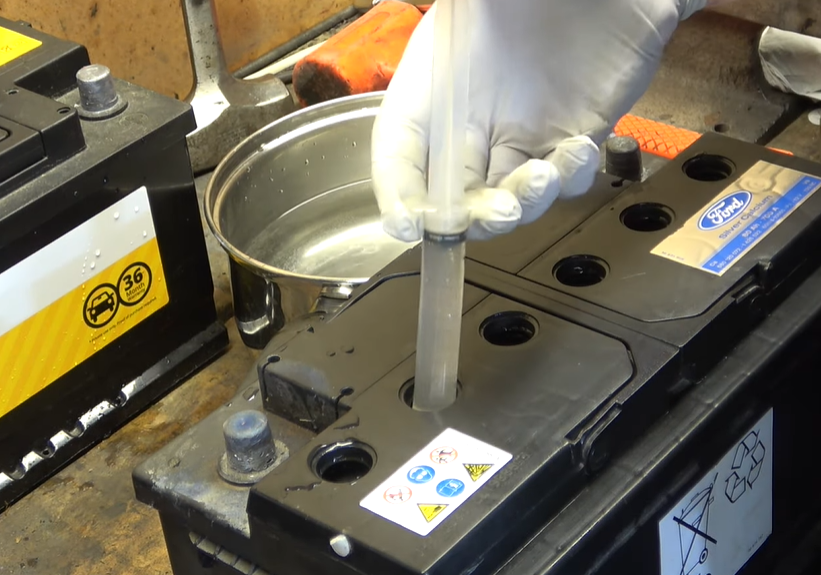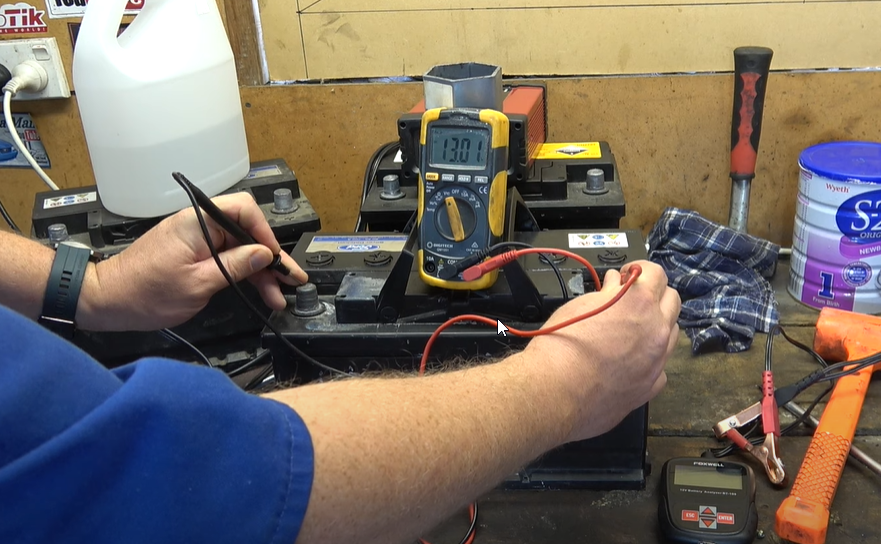Hi, I'm Luis Johnson, an automobile technician, and power equipment professional. By profession, I'm a businessman and operate a car workshop. I have created this...Read more
AGM batteries never need electrolyte refilling, hence explaining their popularity. But one thing that keeps them behind is when you end up discharging it deeply. It doesn’t tend to come alive with jump starting as the lead batteries do.
So, how to resuscitate a deeply discharged AGM battery?
The sneaky way to resuscitate a deeply discharged AGM battery is to use a regular lead acid battery. You have to charge the lead acid battery for 1 hour while having it parallelly connected to the AGM battery. This will push the AGM battery to come alive.
Well, there are more technical aspects to this, of course. But the primary concept works this way and charges the battery. Why not talk about the process a bit further in detail and help you get your AGM battery on its feet again?
How Does An AGM Battery Work
More like sealed batteries, AGM batteries don’t have the liquid electrolyte as the lead acid battery has. But AGM batteries have similar characteristics inside where the acid is soaked in a layer.
That’s where the name comes from; Absorbent Glass Mat (AGM) battery.
Developed in the early 80s, they’re much better alternatives to lead acid batteries. You don’t have to worry about any spillage and can mount it in any direction. The only disadvantage is when you deeply discharge it.
Unlike lead acid batteries, AGM is impossible to jump start with a jump start kit and much harder to resuscitate. The charging process is much like the lead acid battery that we’ve talked about in our lead acid battery jump starting guide.
Why AGM Batteries Discharge Deeply?
Before you can resuscitate your AGM battery, the reasons for its deep discharge are worth knowing. The common reasons (not limited to) why you might end up with a deeply discharged AGM battery are:
1. The age of the battery
The age of your AGM battery is the biggest reason why you might end up with a deeply discharged battery.
AGM batteries could last six to ten years, even longer with proper usage. If you’ve been using it too frequently and drawing the charging cycles out rapidly, it will discharge fast.
As an obvious result, the battery will deplete at this point and the chances for deeply discharging will go higher.
Follow the below-resuscitating method if you want a longer lifetime out of the AGM battery.
2. Unattended Draw
Discharges, be it deep or shallow, is essentially a discharging phenomenon. When you have your car electronics drawing power off of the battery, you’re straining it to a deep discharge.
When you have the engine running though, the alternator keeps on recharging the battery. However, if you forget to turn off all electronics in the car and leave it parked, the battery keeps on discharging.
On top of that, modern cars come with a lot of standalone electronics that run even after you turn the engine and all electronics off. The common ones, like the GPS, Stereo, headlight, etc., are not drawing power in this case.
But the other components like the presets, time, OBD information, and other things that must run 24/7 will keep drawing power. If your battery is old, it can’t take this draw lightly and discharges deeply.
3. Sitting for too long
Leaving your car parked for too long is not a good thing for the battery, regardless of the battery type. When you have many computing systems running under the hood, the AGM battery cannot run all of them for months.
As an obvious output, you end up with an AGM battery, discharged deeply. You can avoid such issues just by starting the engine, run it at 3-4 thousand RPM, or ride it for a couple of minutes, and park it again.
How To Resuscitate A Deeply Discharged AGM Battery
A car battery, whether AGM or Lead, will discharge, and it can go beyond the regular threshold. Since jump starting is not an option in your case, you need to know how to resuscitate a deeply discharged AGM battery in other ways like:

1. Charge With A Lead Acid Battery
Jump starting an AGM battery is not an option, neither charging it is possible from a flat line. The only way to get it back on its feet again is by charging it with a lead-acid battery.

Here are the things you’ll need:
- A good lead acid battery
- A Battery charger
- A voltmeter
- A slow charger
And here are the steps to take after taking the battery out of the vehicle:
Inspect The Battery
Start by testing the AGM battery and see how much voltage it’s sitting at. Use the voltmeter negative to negative and positive to positive terminal to see the output. If it’s below 8 volts, you’re looking at a deeply discharged AGM battery.
Connect The Batteries
Connect the AGM battery to the lead acid one parallelly. Take a jumper cable and connect the positive to positive and the negative to negative. The red cable is positive and the black one is negative while the batteries will have Plus (+) and Minus (-) signs on them.
Connect The Charger
Now, take the battery charger, and connect it to the lead acid battery following the same terminal instruction. Set the charger at 10 to 15 amps depending on how low a voltage the AGM battery was showing. 12 Amps can be a good middle ground, 10 A being safer.
Charge The Lead Battery
Start charging the lead acid battery while it’s connected to the AGM battery. Charge it for around 1 hour at 10-15 amps and that should be enough for the AGM battery to come alive. Take the voltmeter, check the AGM, and it should be more than 10.5 Volts as a minimum.
Charge The AGM Battery
Now that the AGM battery is starting to get back on its feet again, you have to slow charge it to get back on its regular voltage output. For that, you’ll need a slow charger, like the one above from CTek. Charge the AGM battery at around 7 Amps for around 12 to 15 hours.

Check And Start
Once the AGM battery is charged up enough, check for the output voltage at this point and see if it’s between 12-14 volts. If it’s showing such, you’re good to go. All you have to do is, attach it to the car, and try starting the car. Give it a few charging cycles, and you’re good to go.
Here’s a video guide on how you do it:
2. Soak The Absorbent Plates
If the battery doesn’t turn back on, try this method before you give up, lose your hope, and throw the battery away. It’s the same method of refilling a lead acid battery with some extra steps and more cautions to it.

Things you’ll need:
- A turkey baster
- distilled water
- Epsom salts (Magnesium sulfate)
Got them on board? Let’s get you through the steps then:
Step 1: Remove the plastic lid
First, remove the plastic lid using a pry tool or a chisel. It will be glued tight since it’s not supposed to be open anyway. Be precise with this process so that you don’t accidentally trip over the absorbent plates inside. These plates soak the electrolyte as a lead acid battery does.
Step 2: Make a Solution
Next up, you’ll have to make a sodium phosphate electrolyte solution. You can use some plain Epsom salt in this process. Heat up around a quart of distilled water and dissolve the salt (around 20 tablespoons) into it and stir until the salt dissolves. This will work as an electrolyte for the AGM battery as it’s Magnesium sulfate (MgSO4).

Step 3: Refill The Battery
Take the solution and pour it into all 6 cells using the Turkey buster. Be careful not to overdo it, and be very slow at doing it. Unlike lead acid, the AGM battery has absorbent plates inside to soak the electrolyte. Let the plates soak well until you see the top gel is wet.

Step 4: Assemble And Charge
After refilling the absorbent mats inside, put the caps back on as well as the plastic cover. Then you have to recharge it with a slow charger at around 7 Amps for 10 to 14 hours. Then you can check the voltage with a voltmeter. A few complete charging cycles will put its power back on close to 100% and extend its lifespan.

Final Advice
The battery won’t be at 100% capacity again, but it will definitely give you a longer lifespan than usual. And the best part is, that the battery will go close to 100% output if you give it enough charging cycles.
So, be sure to use the battery a lot, discharging it, and charging it back on. This will help you get the battery-giving output as it should again. If you don’t give it some proper charging cycles, the electrolytes inside won’t warm up again.

Hi, I'm Luis Johnson, an automobile technician, and power equipment professional. By profession, I'm a businessman and operate a car workshop. I have created this site Batteryquery to help people purchase the right battery for their vehicles. The reason behind creating this site is to help my customers purchase the right car battery who often purchase the wrong one due to their lack of knowledge.
More Posts